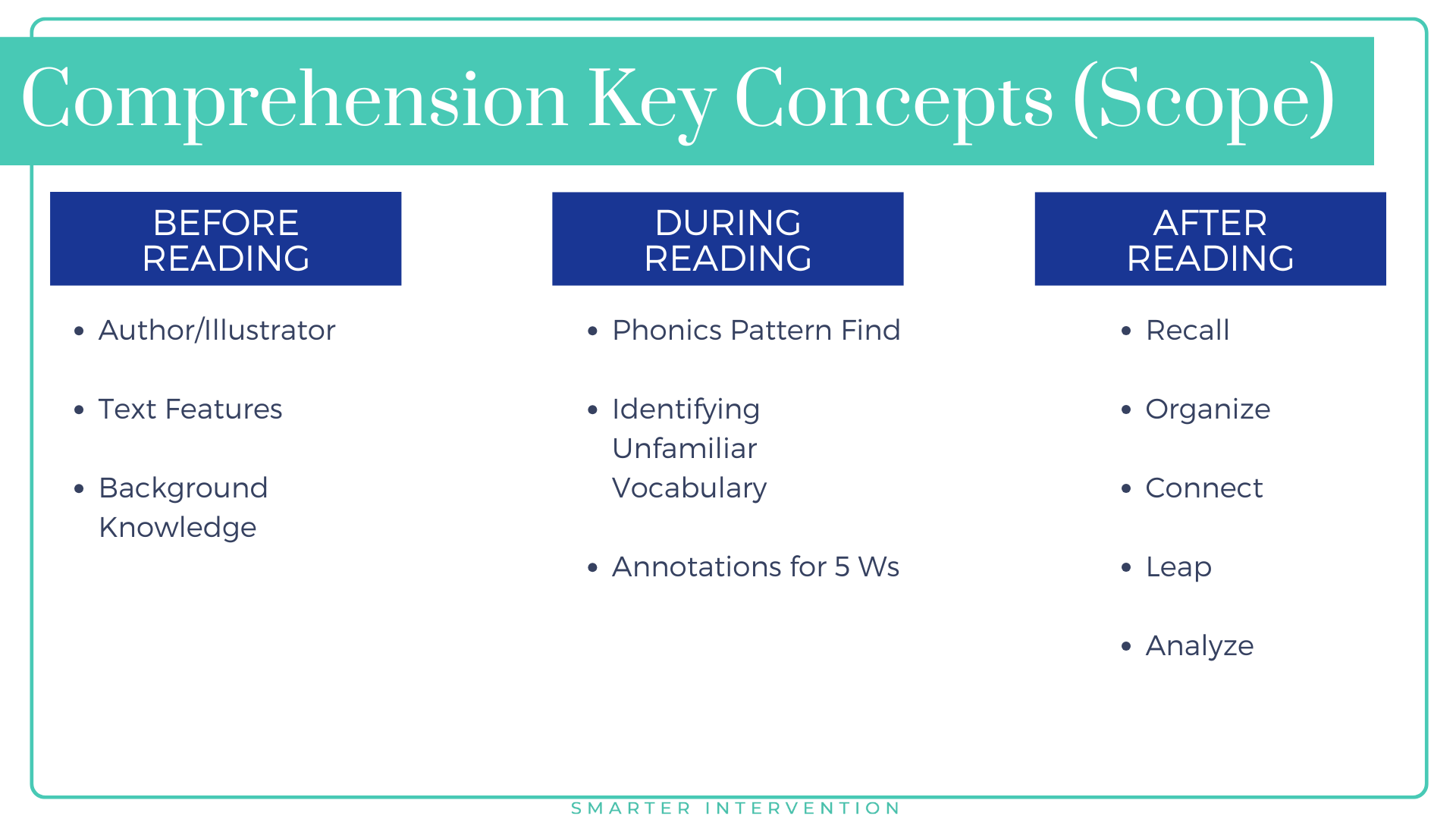What Skills Should We Be Teaching in Structured Literacy?
If you’ve been diving into the Science of Reading, you know one thing for sure: there’s a lot to teach.
But one of the most common reasons educators feel overwhelmed is because they’re not exactly sure what should be included in their instruction. The research is clear that students need explicit instruction, but on what, exactly?
Let’s break it down by the 5 Core Components of Reading, plus writing. These are the skill areas that deserve intentional, explicit instruction to ensure nothing falls through the cracks.
Phonological Awareness
Phonological awareness is more than just rhyming; it’s the foundation for word recognition and decoding.
Key skills to teach:
Auditory discrimination
Rhyme discrimination and production
Blending (syllables, phonemes)
Segmenting (sentences, syllables, phonemes)
Phoneme isolation
Phoneme manipulation (addition, deletion, substitution)
Phonics
Phonics instruction connects sounds to letters and teaches students how written language works.
Key skills to teach:
Vowels and consonants
Blends, digraphs, diphthongs
Welded sounds and syllables (closed, VCe, open, r-controlled, vowel teams, stable final)
Prefixes, suffixes, and roots
Application in sentences, paragraphs, and real-world content (science, social studies, math)
Fluency
Fluency bridges decoding and comprehension; students must read accurately and expressively to make meaning.
Key skills to teach:
Rate and accuracy
Self-monitoring and error correction
Phrasing and intonation
Attention to punctuation and expression
Reading that mirrors spoken language
Vocabulary
Vocabulary instruction needs to go beyond definitions and support both expressive and receptive language.
Key skills to teach:
Metacognitive awareness of word knowledge
Background knowledge building
Categories and parts of speech
Function, purpose, and features of words
Synonyms, antonyms, multiple-meaning words
Syntax and sentence components (subject, predicate, adverbials, conjunctions)
Comprehension
Comprehension is not a single skill; it’s a complex web of strategies that should be taught before, during, and after reading.
Key skills to teach:
Activating background knowledge
Using text features and annotations
Phonics pattern identification in context
Vocabulary decoding in context
Asking and answering questions (5 Ws)
Organizing, connecting, analyzing, and drawing conclusions
Writing
Writing reinforces everything students are learning in reading, and it deserves just as much explicit attention.
Key skills to teach:
Spelling and sound-symbol correspondence
Sentence construction, grammar, and syntax
Paragraph structure and transitions
Mechanics (capitals, punctuation, appearance)
Writing types: narrative, opinion, informative, persuasive, summary
Final Thoughts
If you’ve ever felt unsure about what should be included in your intervention or literacy block, you’re not alone. But having a clear picture of the scope (the full set of skills students need) can be a huge step toward building a more effective system.
If you found this list helpful, download a copy of our Structured Literacy Skills Checklist here!
And if you’re ready to go deeper…
Join us for one of our FREE on-demand PD trainings to learn more about the 5-step framework we use in our intervention.
If you work in the elementary setting - Check out our training, Delivering Effective Elementary Literacy Intervention: The 5-Step Framework for Grades K-6 to learn more and get free resources you can use to support your instruction!
If you work in the secondary setting - Check out Delivering Effective Secondary Literacy Intervention: The 5-Step Framework for Grades 6–12 to learn more and get free resources you can use to support your instruction this year!








